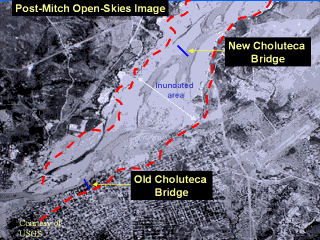 |
Hurricane Mitch and Hurricane Georges were among the most severe and powerful
storms ever to hit Central America and the Caribbean in the history of the
hemisphere. Hurricane Mitch, carrying 180-mph winds at its height on October 26
and 27, l998, produced massive flooding and destruction, engulfing entire
villages and destroying homes, crops and infrastructure. The face of these
countries was permanently changed by the devastation.
Moreover, in most countries of this region the public health infrastructure
has deteriorated. Limited financial and human resources and competing priorities
have resulted in a "crisis mentality" with emphasis on implementing
so-called emergency control methods in response to epidemics rather than on
developing programs to prevent epidemic transmission. This approach has been
particularly detrimental to dengue control because, in most countries,
surveillance is (just as in the U.S.) very inadequate; the system to detect
increased transmission normally relies on reports by local physicians who often
do not consider dengue in their differential diagnoses. As a result, an epidemic
has often reached or passed transmission before it is detected
|
